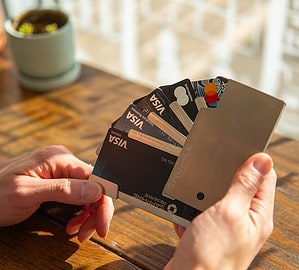When it comes to fundraising, you have to pull out all of the stops. That means seeking exposure and engaging both online and offline. And in terms of offline marketing, there’s something extremely powerful about the strategic distribution of printed flyers.

The Benefits of Printed Flyers
In a business world where companies allocate their entire marketing and advertising budgets to digital mediums like social media, PPC advertising, and video, printed flyers still yield incredible value. In particular, they offer organizations the following benefits:
- Local exposure. “You can get amazing response rates by using printed flyers,” PrintingCenterUSA points out. “Flyers can be mounted or distributed in high traffic areas, such as shopping malls or college campus centers. These locations enable startup companies [and nonprofits] to get in front of hundreds or even thousands of potential customers daily. Additionally, these are local prospects, so they can deliver highly targeted messages.”
- Cost effective. When compared with the cost of designing digital advertisements and paying for placement, printed flyers are significantly more cost effective. When compounded over hundreds or thousands of flyers, this may result in significant savings.
- There’s something powerful about having a tangible marketing material. People can touch, feel, and even hold a flyer. This gives it an added sense of realism that can’t be matched in digital applications.
As a nonprofit, corporation, or other formal group, flyers can be effective in accelerating fundraising efforts and generating positive results. Rather than writing them off as a tactic of yesterday, try embracing them for what they are. You’re going to like the results.
4 Flyer Design and Distribution Tips
Direct marketing with flyers is a great method of engaging people on a personal level and drawing them in to what you’re doing. Here are some helpful tips:
1. Keep it Simple
The KISS principle tells designers to “Keep it simple, stupid.” And even though that acronym has been around for decades, it still rings true. When designing a flyer, your objective should always be to do more with less.
Superfluous elements – which may include text, colors, images, or graphics – only serve to distract people from the primary purpose of the flyer. Whenever you add something into a flyer, ask yourself what value it adds. If it’s neutral or negative, remove it. Minimalist design is the best design.
2. Maintain a Visual Hierarchy
Once you’ve decided which design elements are integral to your flyer, you can organize and prioritize into a visual and typographic hierarchy.
A visual and typographic hierarchy is simply the term for arranging textual and visual elements in such a way that viewers know, with a simple glance, what information is most important (and where to find additional information).
There are numerous ways to establish a flyer’s hierarchy. They may include font size, bullet points, visual cues, text boxes, alignment, proximity, or color scheme. Play around with ideas until you find the one that fits.
3. Ensure Relevancy
Compelling visuals are great, but they need to be relevant to the main cause or call to action that you’re pushing. Otherwise, they’ll just be distracting.
“Most flyers will benefit from some kind of imagery, whether simple graphics like shapes or icons, a photograph in the background, or something more fancy like a custom illustration or hand-drawn typography,” Canva explains. “A visual component that is relevant to the purpose or theme of the flyer will help viewers immediately get a grasp on what the flyer is all about.”
Remember, though, that simple is better than complex. You don’t need a world-class photograph or proprietary design. Sometimes the right vector image will give you everything you need.
4. Include a Call-to-Action
Any good flyer has a call-to-action on it. This call could be soft and unassuming, or specific and direct. Within the context of fundraising, you’ll most likely be asking people to visit a website, attend a meeting, or purchase something that benefits the cause (like tickets, food, etc.).
Diversify Your Approach
Flyers should only be one component of your larger fundraising strategy. It’s important that you diversify your approach as much as possible to reach as many people as you can. This will almost certainly include a combination of both online and offline elements. Try out multiple techniques and find out what works best.



